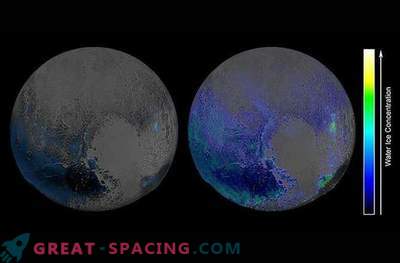
Europe - the satellite of Jupiter, covered with ice crust, under which, presumably, may be the ocean. Perhaps this ocean contains life. Probably no. The exact answer, scientists will receive only after there will be sent a special probe for sampling.
Last week, a statement was made by NASA that the first flight of a spacecraft, which will go around Europe dozens of times, is planned for the 2020s. The mission was approved, and the financing of the project has already begun. To get under the ice (literally), NASA is going to use a tool called REASON (Radar for Europa Assessment and Sounding: Ocean to Near-surfaces) - a radar whose signals can penetrate ice. But what if over time it becomes possible to organize a space flight with the landing of a robot on the surface of the planet?
Britney Schmidt, a project participant, last week, speaking at a conference, said that her team in Antarctica is testing equipment that can be used to study the subglacial depths at a distance of millions of kilometers from Earth.

“Europe is another world for you and me. However, when it comes to exploring the icy surface of the Earth, using a robot does not seem so incredible, ”said Schmidt, a senior researcher at the Georgia Institute of Technology.
Last year, at the McMurdo station in Antarctica, a mini-robot called Icefin (ice fin) penetrated the ice and removed the ocean depths. This was a significant achievement, given that the ice in this region is tens of meters thick. Scientists were able to see what was at the bottom of the ocean on the obtained video records. It all looked like another world, despite being on Earth.
Icefin is a powerful, but rather light machine: it can be transported manually. If necessary, it can even be disassembled into several parts for convenience. His instruments measure indicators such as ice thickness, layers of water, and also record what is in the water and at the bottom of the sea. The device can dive to a depth of 1500 meters and swim up to 3 kilometers under water.

Currently, a more powerful underwater vehicle, the ARTEMIS (Autonomous Rover / Airborne Transformer), capable of making a route 15 kilometers under the ice, has been developed. Schmidt described the work being carried out by the Georgia Institute of Technology as an aid to the NASA space research project in Europe. “Personally, I am proud to be part of the team. I took part in research for a while and I know that this huge group of people has been doing everything possible for 20 years to make the flight take place, ”she said.
Schmidt spoke last Tuesday, June 16 at the Astrobiological Scientific Conference in Chicago. Icefin and Artemis are components of a larger project called SIMPLE or Sub Ice Marine and Planetary-analog Ecosystem, which is partly funded by the NASA Astrobiological Institute.











































